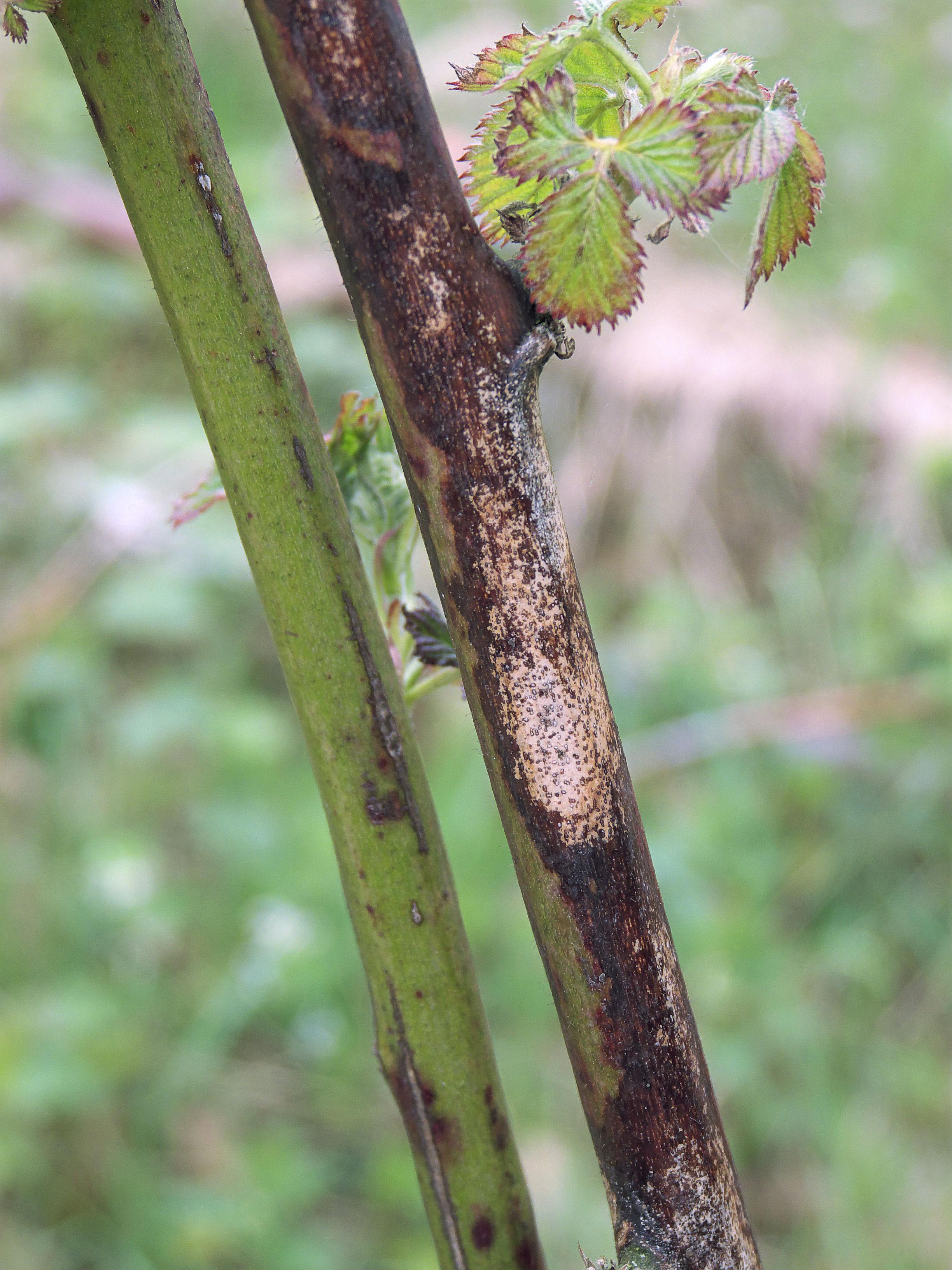
Purple blotch
Septocyta ruborum
What is Purple blotch, (Septocyta ruborum)?
Purple blotch is a plant disease caused by a fungus called Septocyta ruborum. This fungus belongs to the Ascomycota phylum and primarily affects the stems of Rubus species, especially wild blackberries. It is also known as stem spot disease due to the formation of small dark green spots on the stems, which later grow to several centimeters in length. These spots turn purple with a reddish ring. Purple blotch mainly impacts blackberry cultivars such as 'Marion,' 'Evergreen,' 'Kotata,' and 'Waldo.'
How does Purple blotch, (Septocyta ruborum) occur?
During spring, the fungus produces spores on the affected mature canes of blackberry plants. These spores specifically target the young canes. They are dispersed by rain and often collect near the base of hair-like structures called trichomes before infecting the plant. The spores primarily enter the plant through tiny pores called stomata, which are present on the surface of leaves and stems. However, if only the outer layer of stems is scraped, the spores don't infect. But deep wounds make the plant more susceptible to infection.
Symptoms
1 - Plant Health
Septocyta ruborum can weaken plants, causing dieback. Lesions on stems disrupt nutrient and water transport, reducing vigor and productivity. It can lead to lower crop quality, reduced yield, and smaller or deformed fruits on infected canes.
2 - Soil Contamination
Fallen infected plant debris can accumulate on the ground. The build-up of fungal inoculum in the soil may increase the risk of future infections.
Solutions
1 - Cultural methods
• Grow less susceptible varieties like Boysenberry or Loganberry. • Train canes vertically to improve airflow and reduce disease severity. Additionally, Control weeds to prevent infection and ensure adequate spray coverage. • Remove old fruiting canes after harvest to minimize overwintering inoculum. • Optimize plant spacing and implement canopy management techniques that promote good air circulation, reducing humidity and disease spread. • Implement measures to manage primocanes (young canes) early in the season to reduce disease incidence.
2 - Chemical Control
1. After Harvest: • Use fixed coppers (Nu-Cop, Cuprofix) or Bordeaux 8-8-100. • Apply Bonide Captan 50 WP in home gardens. • Repeat spray in early October before heavy rains. 2. Budbreak in Early March: • Apply Rex Lime Sulfur Solution or fixed copper. • Use Liqui-Cop for home gardens. • Sulforix can be applied as a delayed dormant spray. 3. Spray Young Primocanes: • Apply Bonide Captan 50 WP or Captan 80 WDG. • Use fixed coppers (Nu-Cop, C-O-C-S) or Kocide. • Pristine can be used on harvest day. • Follow label instructions, reentry periods, and safety precautions when applying fungicides. Consulting local agricultural experts or extension services for specific recommendations is essential.
